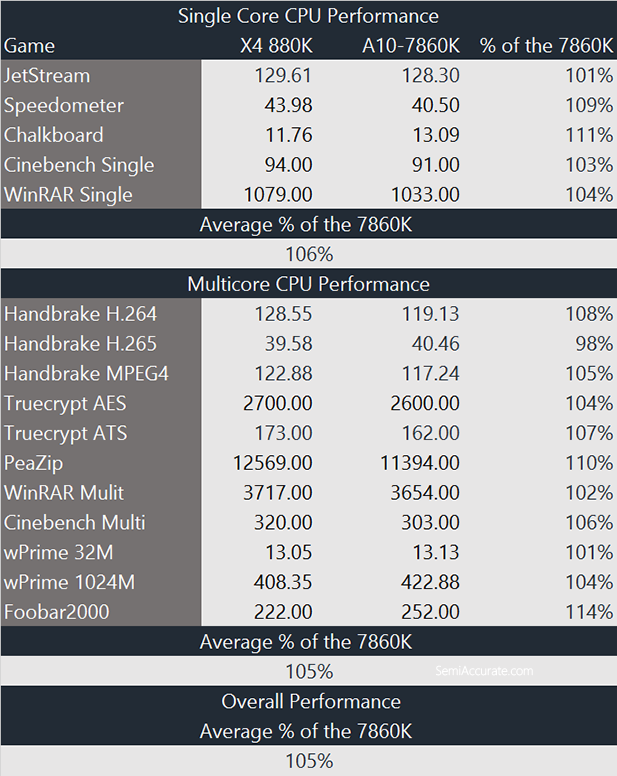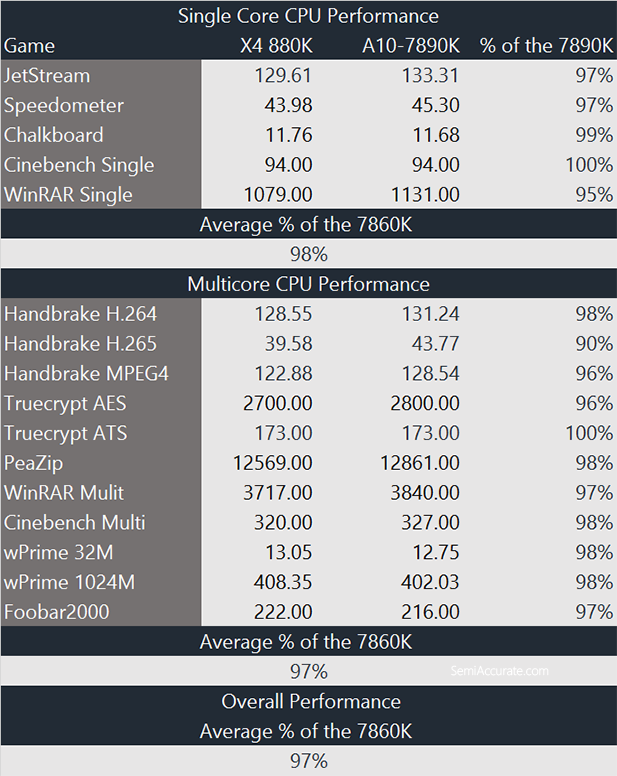In this review we’ll be comparing AMD’s new 95W Athlon X4 880K CPU to two of AMD’s latest APUs the new mainstream A10-7860K and the updated APU flagship A10-7890K. All three of these chips offer four Streamroller CPU cores, support memory speeds of up to DDR3-2133, and are binned from the same 28nm Godavari die. The Athlon X4 880K differs from its two APU siblings in that its GPU portion is completely disabled. Thus making it a good option if you are planning on building a PC with a discrete graphics card where an on-die graphics solution is unnecessary.
What makes the Athlon X4 880K worth your consideration more than any other factor is its price point. At $90 it’s $30 cheaper than the A10-7860K and about $75 cheaper than the A10-7890K. I bring up the A10-7890K because the Athlon X4 880K is only 100 Mhz slower at a 4 Ghz base clock and 4.2 Ghz boost clock than the vastly more expensive APU. The potential for nearly equivalent CPU performance at only 54 percent of the cost of AMD’s best APU could make the Athlon X4 880K a great option for value conscious gamers.
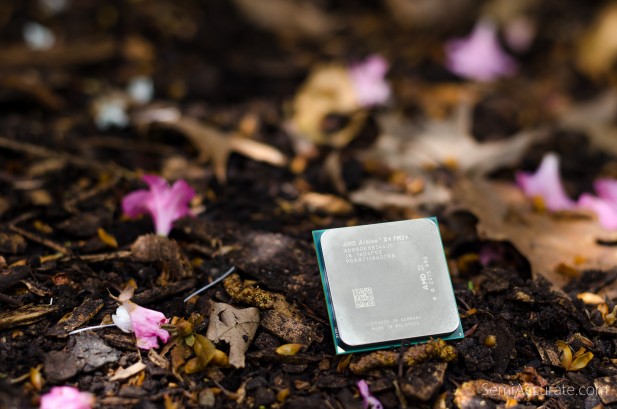
Too Long; Didn’t Read
If you’re a subscriber you can now find our testing methodology, exact hardware configurations, a detailed justification of these benchmarks, and our raw testing data at the very end of the article. We’ve opted to place that information behind our paywall with the acknowledgement that few people actually read those parts of our reviews and with the goal of making these articles easier to read for people who aren’t interested in those aspects of our content.
Transparency Statement
For the sake of transparency, we want you to know that AMD provided both of the APUs, the CPU, and the DDR3 memory we’ll be testing in this review. All the other components were purchased at retail and without the knowledge or consent of those companies. We took no outside input for this article.
Test Results
Again the Athlon X4 880K’s goal here is to beat out the A10-7860K and to match the A10-7890K. We won’t be looking at power consumption, gaming, or compute performance in this review because these chips aren’t directly comparable due to the 880K’s need for a discrete graphics card.
Going up against the more expensive A10-7860K the Athlon X4 880K pulls off a clear win.
Things get trickier trying to take down the A10-7890K and the Athlon X4 880K ends up being just a tad slower across the board. With an average gap of 3 percent it’s still a very close competition though.
Pricing
At $90 the 880K looks like a great deal compared to the 7890K. But that price point also puts it into direct competition with Intel’s Skylake-based Pentium G4500 which sits at $95. The G4500 is a capable chip with two cores, a 3.5 Ghz base clock, on-die graphics, DDR4 support, and a much smaller 51 Watt TDP compared to the 880K’s 95 Watt rating.
Conclusions
The Athlon X4 880K is the best chip that AMD offers for gamers that are building a socket FM2+ PC with discrete graphics. You get almost the best CPU performance that AMD’s Godavari can offer for almost half the price of the APU version. Within AMD’s product stack this is a chip that makes perfect sense. Where things get complicated is when you consider the competition. Let’s look again at our simple comparison matrix.
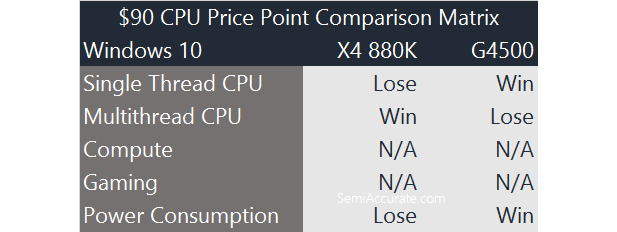
Given the similarity in clock speeds and Intel’s performance per clock advantage we expect the Athlon X4 880K to lose in single threaded performance and win in multithreaded performance. Compute and Gaming performance are both moot because the Athlon X4 880K requires the use of a discrete graphics card. Leaving us with power consumption where the G4500 has a TDP rating that is half as much as the Athlon X4 880K. One win and two losses make it clear that you won’t want to pick this chip if raw performance or efficiency are your goals. But the Athlon X4 880K offers one thing the G4500 can’t: a good stock cooler. The 880K comes with AMD’s new 125 Watt near-silent cooler which is clearly better than the 65 Watt stock cooler Intel ships the G4500 with.
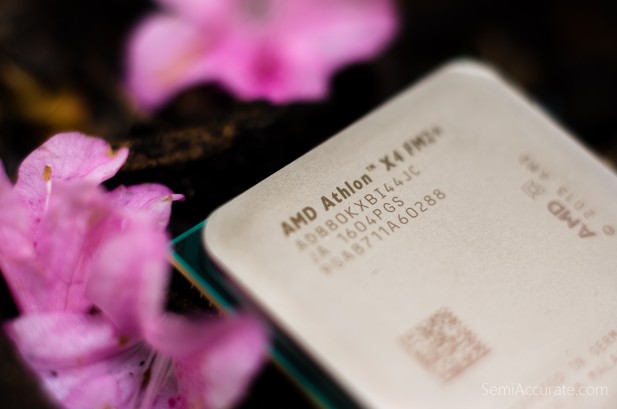
In the end the Athlon X4 880K holds a very interesting position within AMD’s current desktop line up and if you want to pair a socket FM2+ chip with a discrete graphics solution than look no further. On the other hand if you’re not invested in Socket FM2+ yet, then Intel’s Pentium G4500 is a more compelling solution at the $95 price point.
Note: The following is for professional and student level subscribers.
Disclosures: Charlie Demerjian, Thomas Ryan and Stone Arch Networking Services, Inc. have no consulting relationships, investment relationships, or hold any investment positions with any of the companies mentioned in this report.
Thomas Ryan
Latest posts by Thomas Ryan (see all)
- Intel’s Core i7-8700K: A Review - Oct 5, 2017
- Raijintek’s Thetis Window: A Case Review - Sep 28, 2017
- Intel’s Core i9-7980XE: A Review - Sep 25, 2017
- AMD’s Ryzen Pro and Ryzen Threadripper 1900X Come to Market - Aug 31, 2017
- Intel’s Core i9-7900X: A Review - Aug 24, 2017

